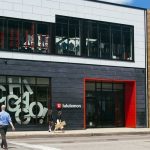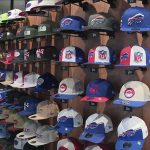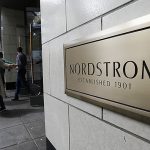According to initial forecasts, holiday sales came in better than expected. The gains are attributed to the improving economy, including a rebounding job market and lower gas prices, as well as robust online selling.
The holiday period was marked by steep discounts and scattered spending throughout the two-month season, including a weak Black Friday weekend and slow Super Saturday, the weekend before Christmas. But holiday discounts arriving on holiday merchandise arrived as early as Halloween to spur spending and sales also picked up with promotional efforts in December.
With customers returning with gift cards, post-Christmas sales also provided a last-chance burst of spending. The holiday shopping season can account for more than 20 percent of the retail industry's annual sales.
ShopperTrak, which monitors the number of people walking into stores, estimated combined November/December sales rose 4.6 percent, beating its 3.8 percent estimate. The results represented the strongest growth since 2005, when it estimated sales rose 5.2 percent.
Customer Growth Partners, a retail-oriented private equity fund, said stores and online sales rose 3.9 percent, outpacing its estimate of 3.5 percent.
According to Mastercard Spendingpulse, retail sales in the U.S. during the Black Friday to Christmas Eve period increased 5.5 percent, in line with its original forecasts. The gain was attributed to one additional shopping day this year over 2013 and an improving economy. Mastercard, which monitors payments networks to come up with its estimates, admitted it wasn’t certain how much was discount-driven.
Casual dining and lodging grew double-digit and nearly double-digit year-on-year sales growth, respectively.
“This holiday season was a social one,” said Sarah Quinlan, SVP at MasterCard Advisors, in a statement. “While certain retail categories saw steady performance from prior months, the focus on creating experiences stayed at the top of many lists.”
According to Mastercard, Jewelry and furniture were up mid-single digits while apparel saw single-digit growth. A surprising shortfall was the flat sales of electronics, although some analysts attributed that the decline in PC sales.
E-commerce again apparently saw strong double-digit growth. Aggressive targeted promotions and holiday promotions arriving well before Black Friday weekend helped boost online sales and spread purchases across the period, according to market watchers. Increased usage of mobile devices, whether tablets or smartphones, as well as omnichannel efforts by traditional brick & mortars also helped.
According to comScore, U.S. e-commerce spending from desktop computers – excluding mobile devices during November/December grew 15-percent year-over-year, slightly ahead of plan. The gain exceeded 2013’s holiday increase of 10 percent and 2012’s holiday gain of 14 percent.
ComScore noted that the results came despite a shortened holiday calendar between Thanksgiving and Christmas and after “erroneous reports of flagging holiday sales.”
“Increasing positive consumer sentiment, improving job growth and declining gas prices all combined to create a more favorable spending environment, and consumers responded by opening up their wallets in a way they hadn’t since before the financial crisis,” ComScore’s Chairman Gian Fulgoni said in a statement. “In the end, we saw growth rates in the mid-double digits as the online channel continued to gain meaningful share from brick-and-mortar.”
In another bullish report, the IBM Digital Analytics Benchmark showed that overall November/December online sales including mobile sales were up 13.9 percent. Mobile sales accounted for 22.6 percent of all online sales for season and increased 27.2 percent year-over-year.
Other findings in the IBM report:
Average order value was $119.33, down 8 percent over 2013, with shoppers purchasing an average of four items per order. The average order value spent on PC was $125.12 compared to $104.82 on mobile devices;
Mobile accounted for 45 percent of online traffic for the holiday season, an increase of 25.5 percent year-over-year;
Desktop PC traffic represented 54.8 percent of online traffic, and 77.3 percent of online sales. Smartphones drove 31.2 percent of total online traffic but only 9.1 percent of sales. Tablet sales accounted 13.4 percent of online traffic and the same 13.4 percent of online sales.
The one troubling report came from RetailNext, which specializes in retail analytics for physical stores, which reported a 6.5 percent year-over-year decrease in sales on a 7.1 percent decline in traffic at brick-and-mortar stores for the holiday season. It previously reported an 11 percent decrease in U.S. store sales on an 11.4 percent decline in store traffic for November.
“Early-November and late-December had the most positive results for retail stores,” said Shelley E. Kohan, RetailNext's VP of retail consulting, in a statement. “While digital stole the show in between and captivated shoppers with aggressive promotional strategies, retailers who were able to effectively converge digital and physical channels to encapsulate the entire period will show the most positive results for the holiday season.”
A fuller picture comes this week when the National Retail Federation releases its holiday results based on government data that includes online sales. The trade group projects a 4.1 percent increase to $616.9 billion.









